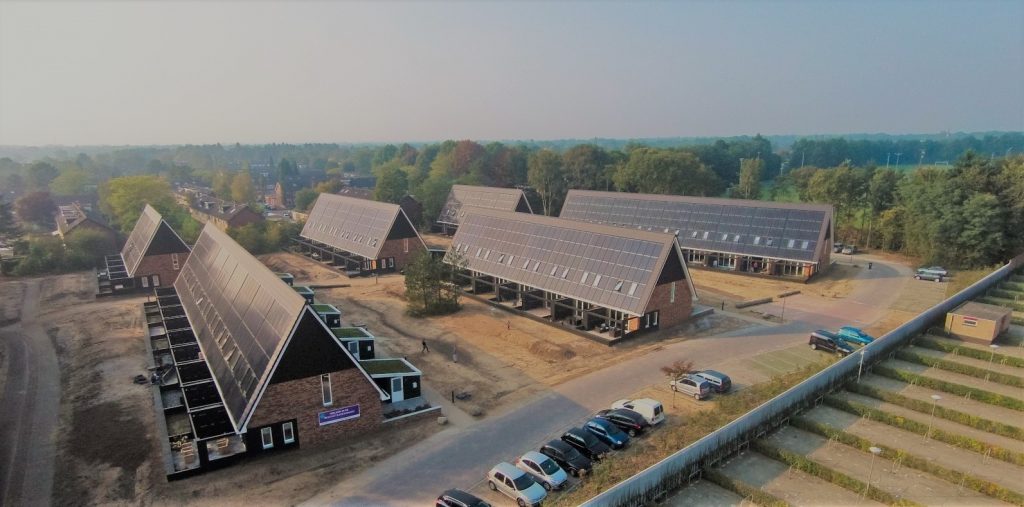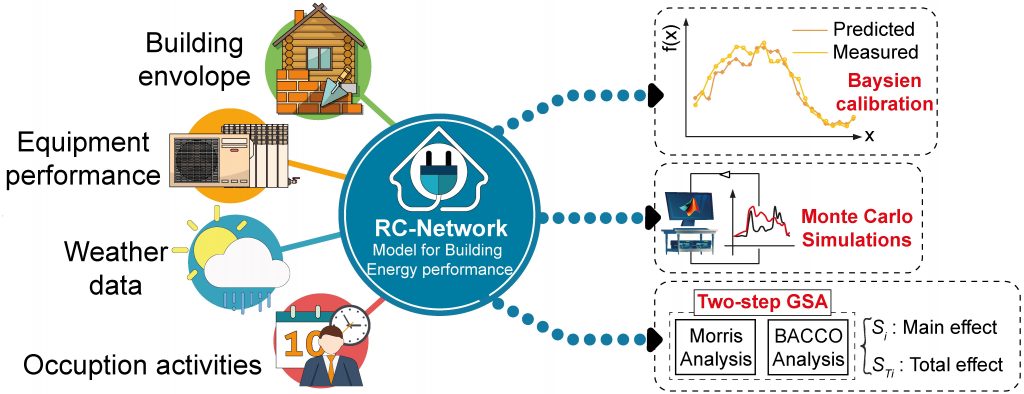17/12/2020
New diagnostic tool to assess and guarantee nearly zero-energy buildings performance
The nearly zero-energy buildings (nZEB) present a promising contribution to fulfil the EU sustainable future targets. However, the construction industry that leads the development of nZEB is facing challenges to guarantee its performance. One study led by researchers from the URV in cooperation with TNO has created a diagnostic tool that uses minimal monitoring data to assess and guarantee nZEB performance

The nearly zero-energy buildings (nZEB) present a promising contribution to fulfil the EU sustainable future targets. However, the construction industry that leads the development of nZEB is facing challenges to guarantee its performance. One study led by researchers from the URV in cooperation with TNO has created a diagnostic tool that uses minimal monitoring data to assess and guarantee nZEB performance
A vital footstep to spread on the sustainable community’s concept relies on the energy efficiency in the building sector. In the European Union (EU), a fraction of 40% of the total energy is utilized in the building sector. This represents 36% of the total CO2 emissions. Thus, in the building sector, the EU’s environmental and energy policy has made progress in increasing sustainability and resource efficiency to reduce CO2 emissions and energy consumption. The objective of the European Commission is to reduce the CO2 emissions from the building sector in 2050 by 88-91% compared to 1990 levels.
In this context, the EU proposed the nearly Zero-Energy Buildings (nZEB) as a promising solution to achieve its target. These buildings have almost zero net energy consumption. This means the total amount of energy used by the building on an annual basis is equal to the amount of renewable energy produced on the site, or in other definitions by renewable energy sources offsite. They use technology such as heat pumps, high-efficiency windows and insulation, and solar panels. In the housing scale to get comfortable and energy-efficient in the nZEB, it is important to understand which aspects of an individual home is important to guarantee the actual energy consumption and indoor climate to meet the client’s expectations. Monitoring is an indispensable component. There is increasing experimenting with monitoring to understand and guarantee the performance with respect to energy consumption and indoor climate, which in reality often turn to deviate from expectations. In addition, it is more important that the guarantee of such performances also takes place on a large scale.
In practice, the construction companies that lead the development of nZEB in Europe indicate a substantial obstacle to guarantee nZEB performance with improving their market position. This is aligning with clients doubts in the ability of nZEB to meet the required indoor comfort conditions. An additional challenge is that the guarantee of building data quality where monitoring a thousand of homes simultaneously isn’t feasible since sensors may not function properly and it can be out of budget. Therefore, the need for a generic approach to monitor and guarantee the building performance is essential. Furthermore, this approach should be based on adequate and minimal monitoring data from individual homes to find out what is the cause for the current situation of the deviations between the actual and expected performance as analyses based on wrong data lead to wrong conclusions, wrong decisions, extra costs and loss of support.
Following the challenges facing the construction companies in EU, The researchers Dieter Boer, Manel Vallès and Mohamed Hany Abokersh (doctoral researcher within the Martí i Franquès COFUND programme) from the URV’s Department of Mechanical Engineering in cooperation with Building Physics department from Netherlands Organisation for Applied Scientific Research (TNO) and the construction group Royal BAM developed a virtual test environment to trace the nZEB energy performance challenges. The application of the proposed test environment has been illustrated through a dwelling located in a district of Emmen at the Netherlands. The tool shows that the deviation in building energy performance is due to the infiltration rates followed by the construction properties comprising the facade glass properties of the building. Moreover, without losing the generality of the results, including more in parameters regarding the occupant behaviour can contribute significantly to the analysis conclusion. This test environment can serve as a diagnostic tool to assist the construction industry and installation companies to analyse the performance of their products proactively. Furthermore, it can promote a clear statement toward the EU approach to sustainable development.
The study forms part of the MATCE project (Methodology for analysis of thermal energy storage technologies towards a circular economy), coordinated by researchers from the URV, TNO and BAM funded by the Spanish Ministry for the Economy and Competition. Furthermore, this work is a part of TKI Urban Energy from the Surcharge for Top Consortia for Knowledge and Innovation (TKIs) of the Ministry of Economic Affairs of the Netherlands. It is also supported by the ICREA Academia programme, which is part of the Horizon2020 Programme of the European Union and the Marie Sklodowska-Curie Actions, and the Spanish Network for the Storage of Thermal Energy.

Reference: M.H. Abokersh, M. Spiekman, O. Vijlbrief, M. Vallès, D. Boer, “A Real-time Diagnostic Tool for Evaluating the Thermal Performance of Nearly Zero Energy Buildings,” Applied Energy, January 2021, vol. 281. DOI: https://doi.org/10.1016/j.apenergy.2020.116091
